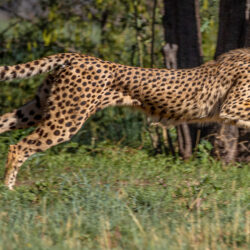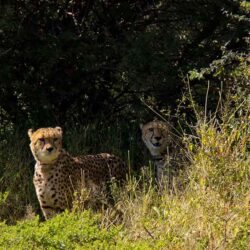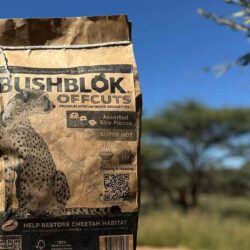Human-Wildlife Conflict Call – What was the Predator?
-
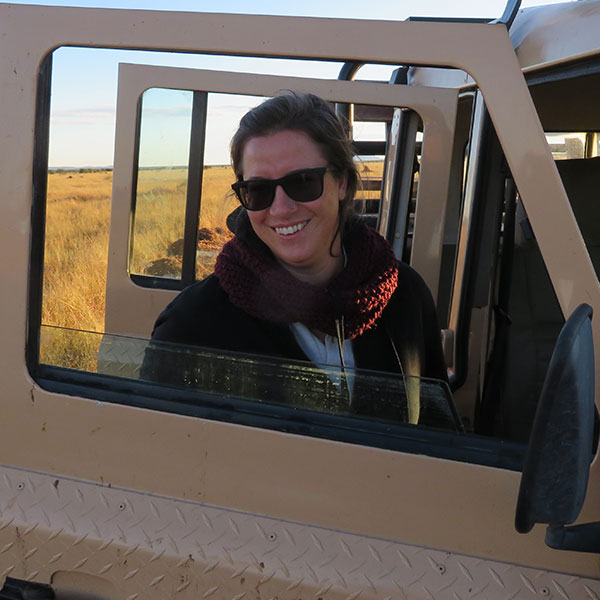
- by Nadja LeRoux June 25, 2020
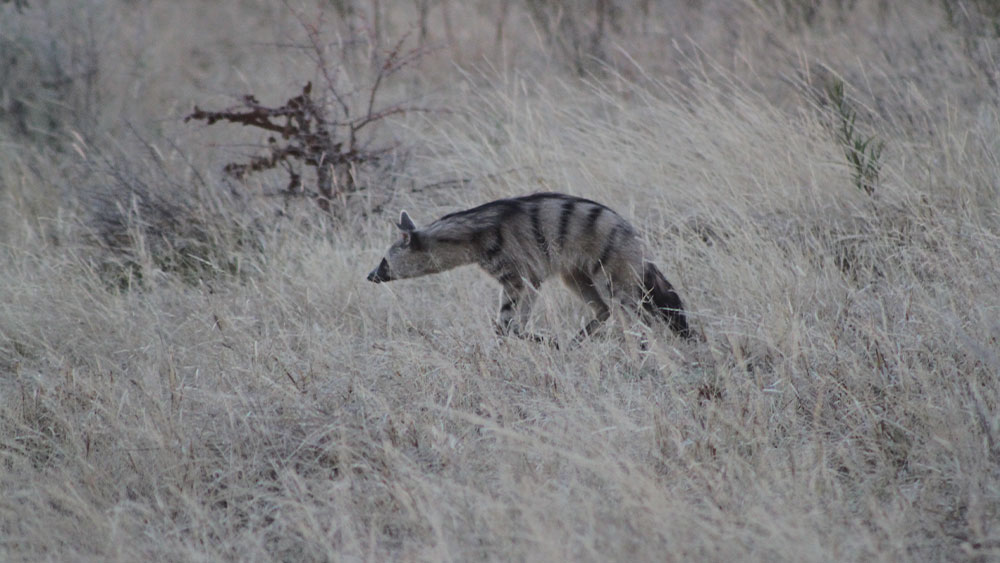
The Senegalia mellifera, which is the predominant acacia species that CCF’s Bushblok program removes. It is a serious problem since it takes over grasslands that have been destroyed from overgrazing and the megafauna that would normally eat it (rhinos and elephants) are gone. It is commonly known as the “Wag ‘n bietjie boom” which translates to “Wait a little bit tree”. It’s very thick and often encountered at knee height. The tree has small hooked thorns that get a hold of you as you walk and can leave us tangled up for a while. Very often when tracking predators, walking through the bush can’t be avoided. We try to follow wildlife or cattle trails to avoid it but torn clothes and scratches become a part of the norm out here.
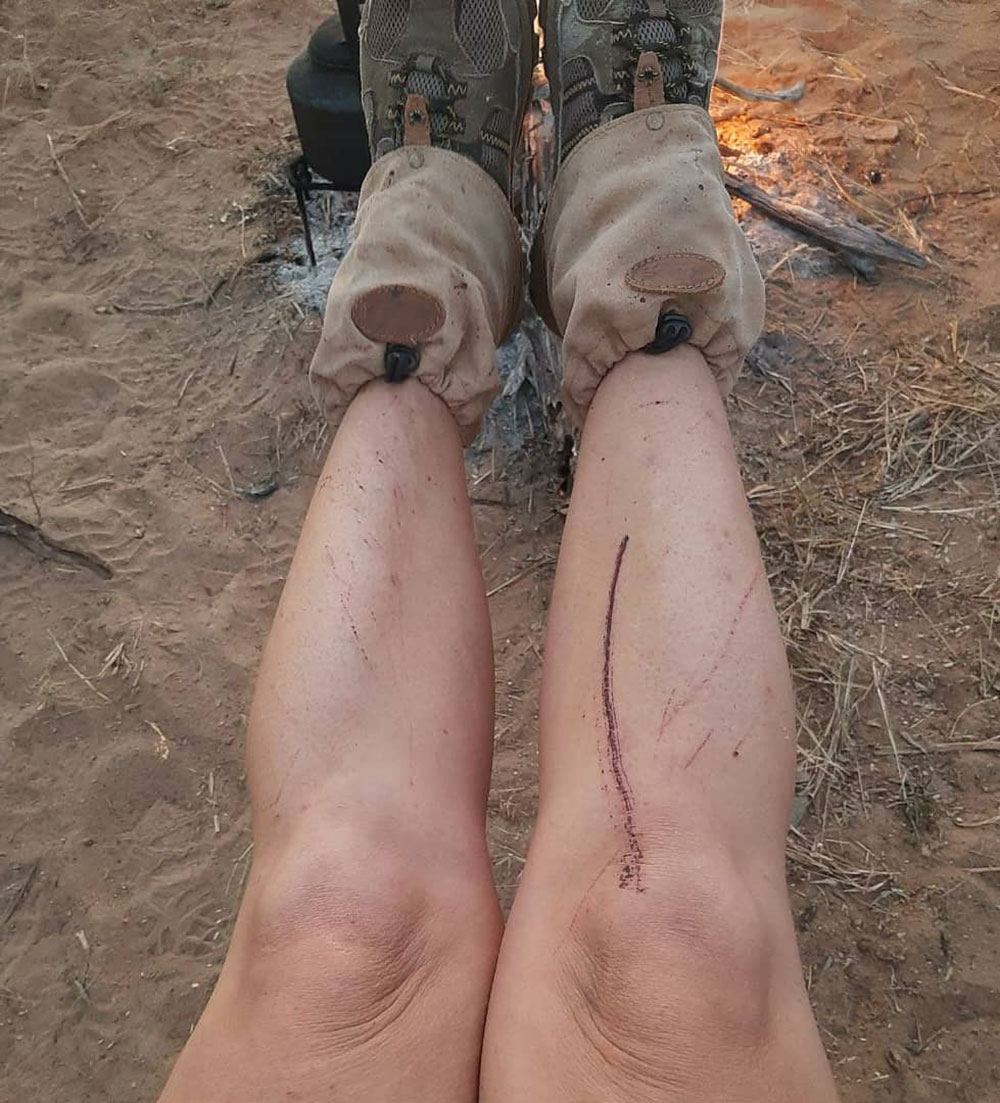
On our farm visits we are noticing the work of one of our partners, the Development Workshop Namibia (DWN). They are showing communities how to make “Tippy Taps” a simple DYI mechanism for sanitizing hands in efforts to curb COVID-19. Many of our partner organizations have been out in various communities setting them up, and teaching people how to do it. What a great initiative!
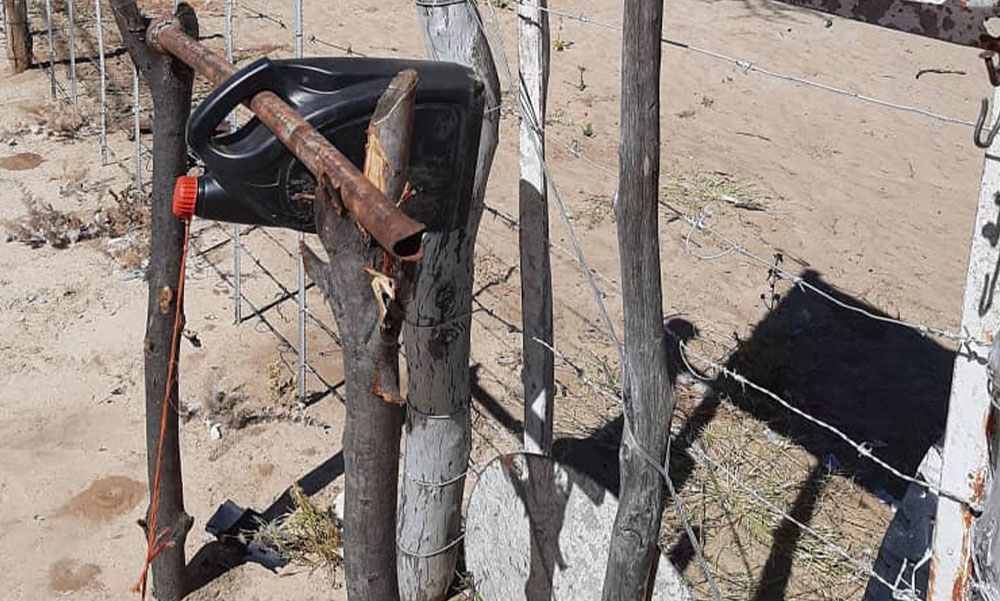
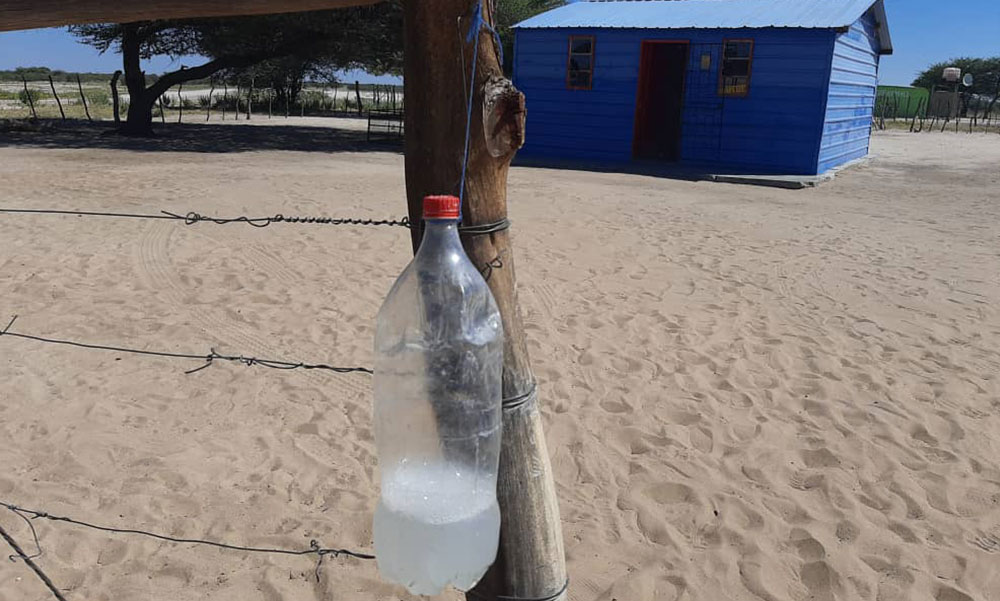
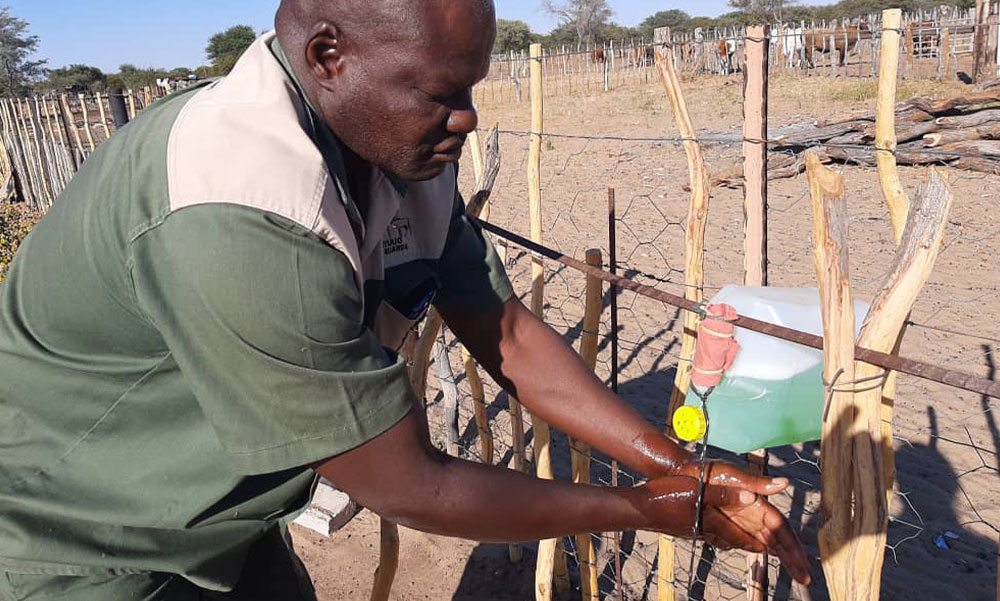
The CCF field team responds to all calls from farmers regarding human-wildlife conflict (HWC), particularly with our vulnerable and endangered cheetah and African wild dog. The first call is always spent trying to understand the whole picture to figure out what’s going on. It’s very important to also get a feel of the area and farm dimensions, however communal farms don’t have maps, so we make-do with drawings in the sand.
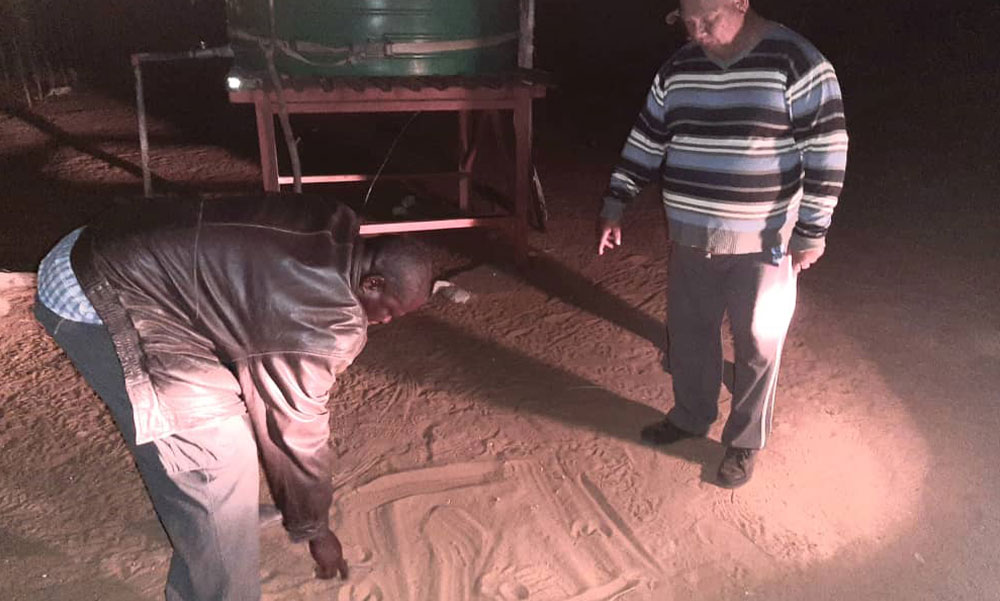
A farmer called us when he’d lost some calves recently, but he was not sure which carnivore was responsible. His worker patrolled the camp and informed the owner that he had seen two “dogs” run out of a camp. Due to the high persecution of African wild dogs and den disturbances, we take reports like that very seriously. As we checked off our list of questions regarding the scene of the conflict and the observations of the worker we started feeling like this was not African wild dog. When we do HWC calls, we carry photos of carnivores with us, So we got them out and went through all the denning carnivores.
Was it…
African Wild Dog? No.
Brown Hyena? No.
Spotted Hyena? No.
Aardwolf???!!!!!!! Yes!! That’s the one!! (See the featured image at the top of this post)
We were so pleased to have a concrete answer so that we could have the opportunity to give the farmer more information on Aardwolf. They do not predate on Livestock. Aardwolves’ diets consist of insects and larvae, their main source of food being termites. Based on the age of the calves (two weeks), it’s more likely that they were killed by jackals. We advised the farmer that calves so young should not be in the camps at night, and should instead be kraaled for protection from jackals.
Related Reading
-
October 14, 2025
Cheetahs Were Born to Run -
July 3, 2025
Double Your Donation During July and August

